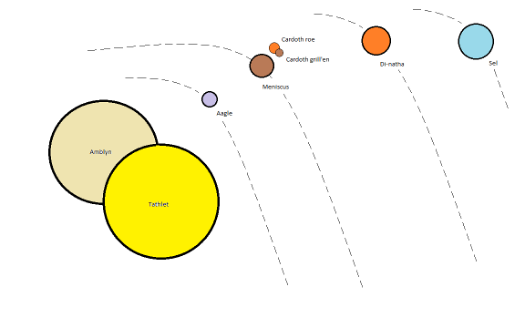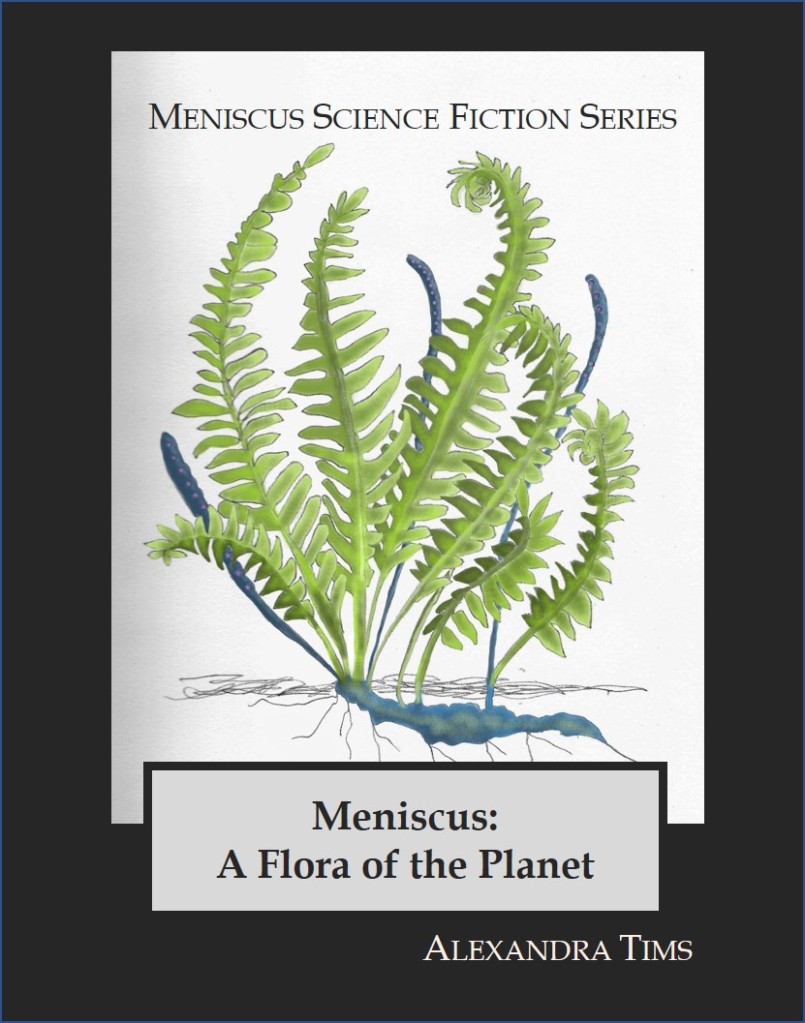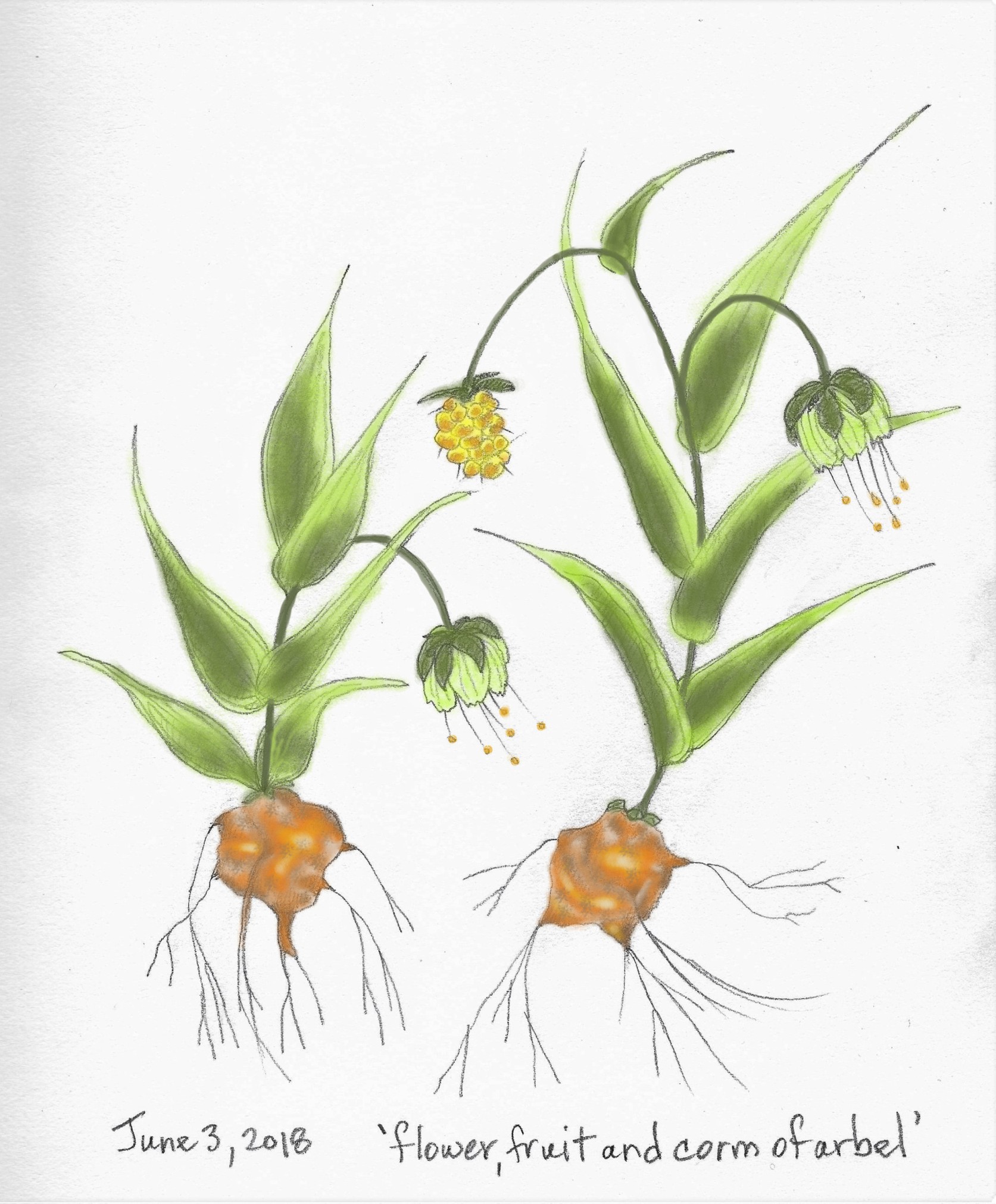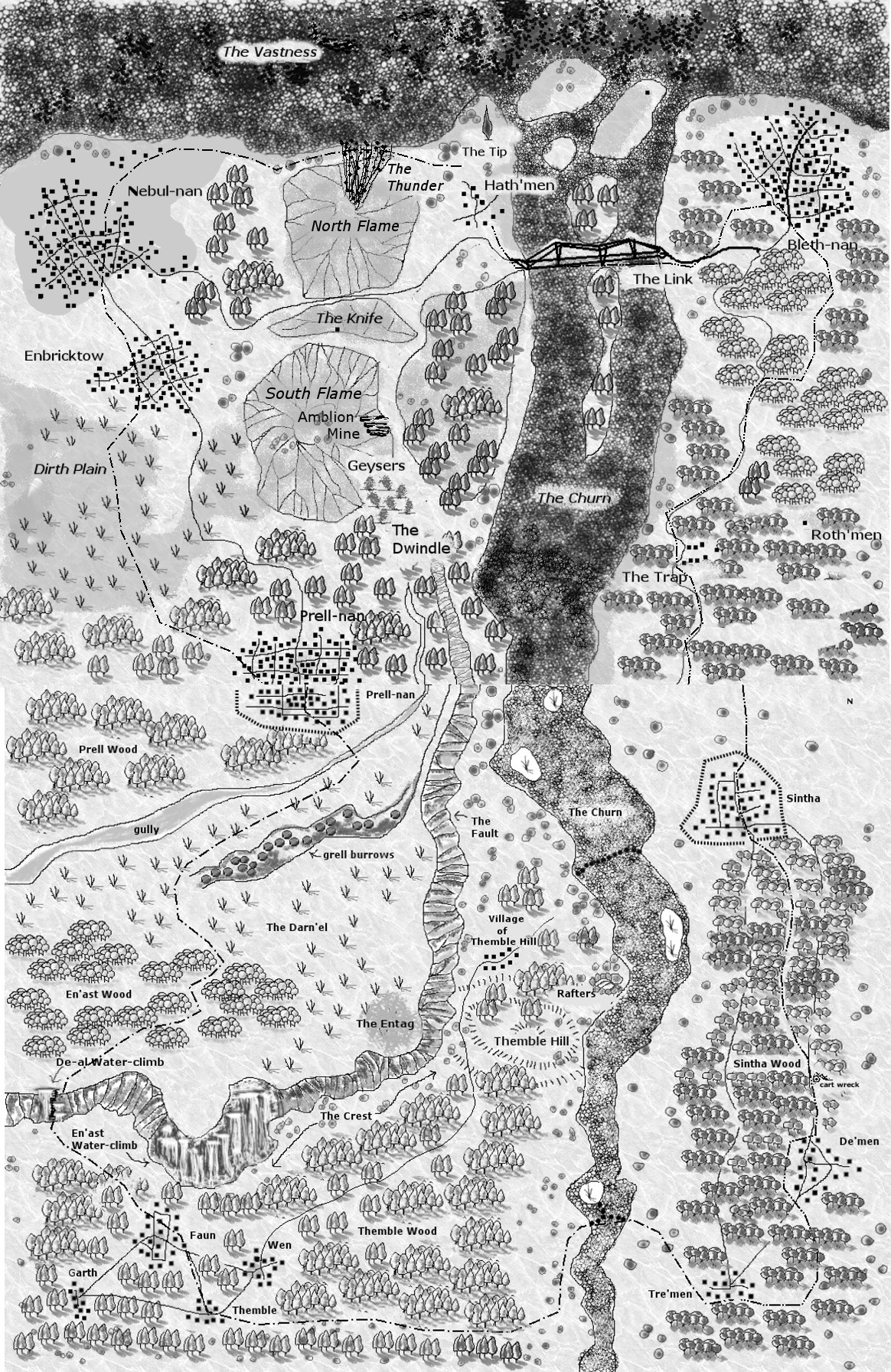~
One of my goals this year is to work on a project begun a few years ago, preparing a Flora of Meniscus, an alien flora because Meniscus is a planet out there, in a solar system far, far away.
~

~
Of course, that is one thing about being a writer: as I write the stories of Meniscus, I am there. I have walked on Meniscus just as certainly as I have walked the Earth. In my imagination, I can feel the give of the vegetation beneath my feet. I can hear the bird-life singing. I can see a new plant, just there, hidden among the ‘greenery’ of the forest floor. I experience each new plant found and described by the Humans of Themble Hill. And my characters have been obsessed about the plants they find:
1. plants as food (the main character, Odymn, says she takes a nibble of every new plant she finds to see if it is edible); for example, ransindyne, a plant grown for its edible root;
2. plants as poison (Madoline, the cook, searches diligently for plants she can use to poison her enemies); for example, dagger-drip – a plant with clusters of toxic pink berries;
3. plants as medicine (Edward, the doctor, learns from the native Argenops, what plants have special healing characteristics); for example, arbel – a nodding woodland flower with an edible corm, makes a tea helpful to treat pain;
4. plants as recreational drugs (Trath, one of the Slain on the planet, makes his living selling beelwort, and is always on the lookout for new commercial possibilities);
5. plants as art (Kathryn, a character who escapes bondage under the Dock-winders, spends her time drawing the plant-like organisms she sees). Perhaps Kathryn will be credited with doing the drawings for my Flora!
~

~
Before I begin, I will state that if life does exist on another planet, it would not necessarily be classifiable in one of the five groups assigned to living things on Earth (for example ‘plant’ or ‘animal’) (for an explanation of classifications of life on our planet, click here). But, because living things tend to solve problems in similar ways, I have decided that some of the life on Meniscus would be ‘plant-like,’ ‘animal-like’ or ‘protista-like,’ etc. I have also assumed that on an alien planet, there would be a relationship between any living form and the space it occupies …. an ecology.
~

~
As I draw and colour the images of the various plant-like organisms on Meniscus, I know my human, earth-bound brain tends to invent variations of plants we have here on Earth. But I don’t feel worried about that since I understand a principle of ecology. ‘Form follows function’: living things, no matter where they occur in the universe, are bound to solve physical problems in similar ways. In terms of evolution, when unrelated organisms solve problems in similar ways, the concept is called convergent evolution.
~

~
For example, a plant needing to lift its photosynthetic structures upward, toward sunlight, needs a way to do that. Short of evolving wings, a sturdy ‘stem’ provides a simple, elegant solution. So most of the plant-like organisms on Meniscus will have stems. To solve the issue of efficiency in gathering sunlight, most plant-like organisms will use a flat, horizontal surface, a kind of ‘leaf. So, we have a ‘fern-like’ plant form, the huge slag-fern which occupies a lot of the forest understory in the Meniscus woods.
~

~
The people of Themble Hill give some plants on Meniscus the names of plants they resemble on Earth; for example, a plant resembling Earth’s blackthorn is called sloe. Some plants are actually from Earth. For example, there are whole forests of banyan on Meniscus. Banyan is ‘a tree, native to Earth, with aerial prop roots; an individual tree spreads by these roots until it resembles a grove of trees; brought to Meniscus as an ornamental but escaped to overtake the natural grammid forest when birds carried the banyan seeds to their nests.’ The characters in the Series also find other ‘escapes’ from Earth: coltsfoot (Tussilago farfara, a dandelion like flower whose leaves appear early in spring) and glasswort (Salicornia sp., a succulent that grows in salt marshes on earth).
~

~
To continue creating a Flora of Meniscus, I decided to re-read all of the books in the series and list the ‘plant-likes’ as I encountered them. As I read, I recall that I have already done this in creating a glossary of plants in each book. However, I am so glad I took the time to reread the series since I enjoyed my re-discovery of the characters and their stories. This renewed familiarity will help me when I refine the last book in the Series – Meniscus: The Reckoning.
~
Now that I have a list of the ‘plant-likes’ on Meniscus, I will have to decide if I should add some plants not encountered by the Humans of Themble Hill. I think I will, for the following reasons:
- realistically, the Human of Themble Hill would not have found every plant living on the planet;
- as a biologist, the subject interests me;
- adding plants to the Flora would broaden the scope and interest of the Meniscus setting for my readers;
- adding plants may suggest possible future stories in the Series.
My next step will be to start designing some new ‘plant-like’ species for Meniscus. I have also decided to follow the tradition of various Earth ‘floras,’ and describe the physical setting of the various ecozones of Meniscus and a little of the planet’s vegetation history.
~

~
Lots of work to do. I hope this Flora will add new value and enjoyment to the reading of the books in the Meniscus Series.
~
All my best,
Alexandra (a.k.a. Jane)
